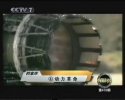Martian
Senior Member
Re: China's Axisymmetric Vectoring Exhaust Nozzle (e.g. TVC) technology
Getting back to my original point, Jane's articles inform us that China has been working on TVC technology for roughly ten years. The J-20 will not achieve Initial Operating Capability until 2018. It is reasonable to expect that China will install its indigenous aircraft engines with TVC by 2018.
China possesses indigenous TVC (i.e. thrust vector control) technology. Is it installed on the J-20 stealth fighter prototype? I don't know. However, it is reasonable to assume that China will install it on the production version of its premier fighter.
Thank you to HouShanghai for the following information:
Chinese TVC newslink:
(Look carefully at 29 min. 22 sec. to 29 min. 27 sec. in the video)

China's Axisymmetric Vectoring Exhaust Nozzle (e.g. TVC) technology
Getting back to my original point, Jane's articles inform us that China has been working on TVC technology for roughly ten years. The J-20 will not achieve Initial Operating Capability until 2018. It is reasonable to expect that China will install its indigenous aircraft engines with TVC by 2018.

